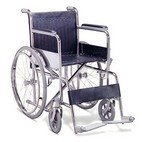Meet the Billion Dollar Mouse
One rainy day I became curious about how much money is spent on Spinal Cord Research nationally and perhaps globally. Searching various combinations of the words Spinal Cord and Research and Funding, Costs, etc., I found nothing but frustration. Most searches lead me to sites requesting donations or how to apply for a research grant. Very few returns provided an accurate accounting of funds utilized in spinal cord injury research at any particular institute, let alone the total spent globally.
I tried the National Institute of Health (NIH), the Miami Project, The Rick Hansen Foundation, the Christopher Reeve Foundation, The Morton Cure Paralysis Fund, as well as checking the sites of various State research projects just to name a few. Perhaps it is a closely guarded secret since the returns on investment appear to be minimal. Perhaps I’m wrong and great strides are being made to “cure” spinal cord injury. I have not seen it.
Every research facility receiving funding will have their spokesperson throw out positive phrases such as “we’ve made quite a bit of headway” or “our research looks promising” and always “further research is warranted.” How else would you justify requests for additional grants?
As proof, facilities may trot out their resident lab mouse that tragically had his spinal cord transected by a sharp scalpel but now, post treatment, can run a marathon on a treadmill. When a human can do the same, I’ll be impressed.
A Billion Dollar Mouse
Spinal cord injury is a global problem so it would seem logical that every major nation that enjoys advanced health care would invest some proportion of their health care budget in researching spinal cord injury and the means of restoring lost mobility. I imagine that over the last number of decades, millions if not billions of dollars have been spent by countless institutes in many countries on Spinal Cord Research. And what is the result? A Billion dollar mouse.Do I want research to continue? Of course I do but I hold out little hope in seeing any major, useful and practical treatment in my lifetime. Perhaps it will always remain ‘a bridge too far…’ I hope to be proven wrong.
Sorry, I remain cynical.
Spinal Cord Injury Research:
There appear to be three broad categories or strategies in treating spinal cord injuries which I’ve listed below. I intend it only as a ‘thumb-nail sketch’ of areas of interest, research and treatment.
Acute Medical Intervention:
Minimizing Damage and Nerve Protection: What can be done immediately after injury, or shortly thereafter to prevent or minimize the body’s own damaging response to the initial injury. There may be some medical advancement in minimizing damage caused by a cascade of events which occur at or shortly after the initial injury. Controversy still exists as to whether drugs, such as steroids, help or hinder events post injury. The issue remains that the injured person must be rapidly transported to a major hospital knowledgeable in the specific procedures required to thwart further damage.
Repair Strategies through Ongoing Medical Intervention:
Bridging – Regeneration of axons along some bridging scaffold. Cells need a pathway along which to regenerate if regeneration is possible.
Cell Replacement – Utilizing stem cells which will be programmed to differentiate into and replacing the damaged cells.
Cell Regeneration – Encouraging one’s own body and its resources to replace cells or repair damage.
*There are many sub-categories within the general strategies listed above; too many for the scope of this overview.
However the damage is bridged or by-passed, the challenge is to bridge nerve A to nerve A, nerve B to nerve B, and so one down the line, correctly linking the possible thousands (?) of nerve pathways. If a soup of stem cells is poured into the gap and they indiscriminately link nerve A to nerve W, you may try to bend your knee and find your toe wiggles instead.
By-Passing the Damage:
Wearable or Implanted Electronics to Exoskeletons & Robotics: Electronic implants may have some use. While I mean no disrespect to those engineers who developed computer driven exoskeletons, I can’t help think of David Letterman’s “Stupid Pet Tricks”. Yeah, it can be done but to what end? Exoskeletons may cost up to a quarter million dollars and then you might need your four best friends to help you into the contraption and to follow close behind in case you ‘turn turtle’ and end up on your back, unable to get back up. While it may be a moral boost, being able to see the world at a normal height, affordability and long term functionality make the items impractical. They’re a gimmick!
While I have a degree in science, it is not in neuro-science. The above assessment is my personal cynical view after a quick perusal of Spinal Cord Research Internet sites. For the tremendous amount of moneys spent on research, the returns seem to be sparse.
Update: July 16th, 2018; I came across an interesting article related to this topic. Entitled : Why Is Paralysis [Research] Being Short-Changed. It can be found on the Spinal Cord.com website.
* * *







.jpg)


No comments:
Post a Comment